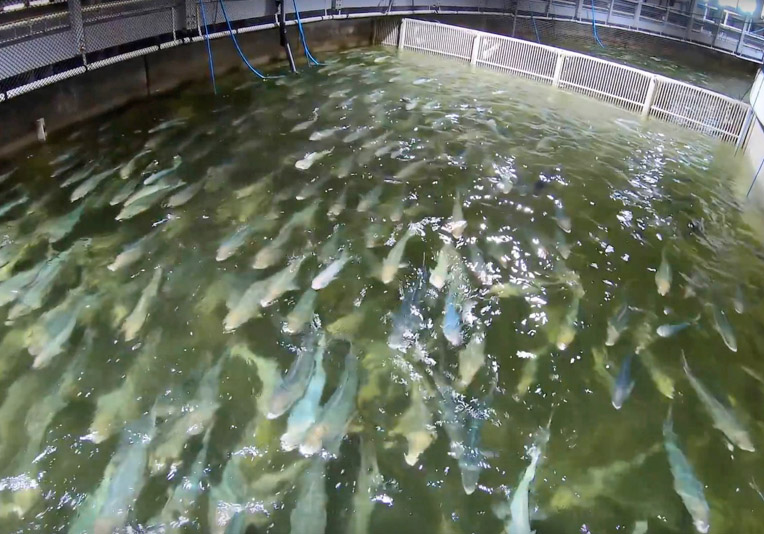Raw material and good workers helped build and sustain Millinocket, until changing markets and a global economy doomed Great Northern Paper Co. And while it’s unlikely newsprint will ever be produced again in northern Maine, that doesn’t mean those factors no longer matter – they just need a new spin.
“It’s been a long time since you could say that we’re on the forefront of a new forest product,” Sean DeWitt, president of Our Katahdin, a nonprofit organization working to rebuild the mill site, told Mainebiz earlier this month, after LignaCLT Maine announced a project that could bring more than 100 jobs there. “You may say, ‘We’re never going back to the days of 4,000 jobs (at the site),’ but this is something. This is really special.”
LignaCLT Maine, a division of a North Carolina-based company, plans to manufacture cross-laminated timber, a product that uses low-value softwoods laid at right angles and fused with glue and pressure. Lightweight but strong, it can be used in structural framing in place of concrete or steel.
The forests that once were turned into pulp and paper may instead be used to support the next generation of buildings.
Cross-laminated timber, which can reduce construction time, has been used for some time in Europe, but is in its infancy here in the United States. Gov. LePage calls it the “next evolution” in Maine’s forest products industry. A market is developing fast.
So fast, in fact, that SmartLam, the first American company to produce cross-laminated timber, is expanding, also to Maine, and also in an announcement made this month.
The Montana-based company, which is still working on finding a site, wants to invest $23.5 million in Maine and create 100 jobs.
Not to be outdone, there was also good news this week out of one of Maine’s other foundational industries.
Nordic Aquafarms of Norway wants to build one of the world’s largest land-based salmon farms in Belfast, signaling an initial investment of $150 million and the creation of 60 jobs within two years, with as much as $500 million of investment and 140 jobs total once completed.
The farm would produce 66 million pounds of salmon a year – about 8 percent of current U.S. production – and it would do it on land, considered the more environmentally friendly approach, and one that differs from the sea-based farms that dominate the market. That gives Maine a foothold in this growing sector of aquaculture.
After a worldwide search, and help from relationships with the LePage administration, Maine was chosen, the company said, because of its “pristine environment, cold water conditions, long history as a leader in the seafood industry and proximity to major consumer markets in the United States.”
(On Thursday, a second company, Whole Oceans, signed an agreement to buy the former Verso Paper mill in Bucksport and expect to invest $250 million in a salmon farm there.)
Each of these projects represents a new twist on old sectors of the Maine economy, bringing a new sense of excitement and progress along with new investment. If successful, they’ll provide jobs for Mainers, and bring here from outside the state workers with new skills and ideas to contribute.
The projects build on foundations put down with foresight. The University of Maine has invested heavily in research into wood-based technologies through its Advanced Structures & Composites Center, which played a role in getting LignaCLT here, and will contribute as the project moves forward.
SmartLam received a grant from the Maine Technology Institute using state money allocated by voters through a research and development bond. Mainers have been building the aquaculture industry here for years, and have protected the coastal waters that support it.
What’s old in Maine is new again, and we can’t embrace it soon enough.
Send questions/comments to the editors.


